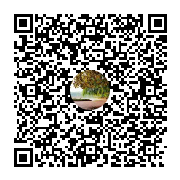现在进行时由主动语态变被动语态是第9单元的重要语法内容。现在进行时由主动语态变被动语态时应注意以下一些问题:
一、也像其它时态由主动语态变被动语态一样,首先弄清楚用现在进行时的句子中哪些可以由主动语态变为被动语态。我们知道,在简单句的五个基本句型中,有三个基本句型(S+V+O,S+V+InO+DO,S+V+ O +OC)可以由主动语态变为被动语态;有两个基本句型(S+V,S+V+P)不能由主动语态变为被动语态。所以,当这三个基本句型(S+V+O,S+V+InO+DO,S+V+O+ OC)的谓语动词用了现在进行时时才有可能由主动语态变为被动语态。例如:
They are studying the milu deer at the research centre.(S+V+O)→
The milu deer are being studied at the research centre.
She is teaching the boy a lesson.(S+V+ InO +DO)→
The boy is being taught a lesson.
Now he is making the girl laugh.(S+V+O+OC)→
Now the girl is being made to laugh.
还应注意到一些动词很少用于被动语态,因此这些动词在句子谓语用了现在进行时时也常没有被动语态。如:We are having supper now.一般不能变为Supper is being had now.。
二、及物动词现在进行时由主动语态变被动语态时有三种句式:①主语(第一人称单数I)+am being +过去分词+其他成分;②主语(第二人称单、复数you,第一人称复数 we和第三人称复数they等)+are being +过去分词+其他成分;③主语(第三人称单数 he,she,it等)+is being +过去分词+其他成分。所以,当句子谓语动词用了现在进行时由主动语态变被动语态时谓语动词要由原来作宾语变为主语时的名(代)词的数来决定,从上面三种句式中选择合适的一种句式。例如:
They are collecting money for the broadband project.→
Money is being collected for the broad-band project.
They are not protecting some animals well enough.→
Some animals are not being protected well enough.
三、当变为主语的原来的宾语(名/代词)有较长的动词不定式短语(复合结构)、介词短语、从句修饰或有补足语时,动词不定式短语、介词短语、从句和补足语等,一般都仍然保留在原来的位置上。例如:
They are revising the laws to protect the rights of women and children.→
The laws are being revised to protect the rights of women and children.
They are writing a report about the negative effects of cell phones in school.→
A report is being written about the negative effects of cell phones in school.
Scientists are keeping a sick milu deer alive at the centre.→
A sick milu deer is being kept alive at the centre(by scientists).
四、如果用在现在进行时的句子中的谓语动词是动词短语或习惯用语,那么这个动词短语或习语只把动词变为被动语态,其他部分保持不变。例如:
The parents are taking good care of their test-tube baby.→
Their test-tube baby is being taken good care of(by the parents).
五、当用了现在进行时的句子结构是"S+V+In O+DO"句型时,既可以把间接宾语变为被动句的主语,也可以把直接宾语变为被动句的主语,但如果是后者,可根据动词的习惯用法,把间接宾语改写为to或for引起的介词短语。例如:
George is sending his friend's phone texts and pictures.→
His friend's phone is being sent texts and pictures(by George).
Texts and pictures are being sent to his friend's phone(by George).
She is making Toma new coat.→
Tom is being made a new coat.
A new coat is being made for Tom.
六、用了现在进行时的句子由主动语态变为被动语态后,原来充当主语的名/代词(特别是人称代词)在一般情况下可以省略掉,如果有必要强调时可用by表示,常放在句子后面。例如:
They are adding new functions to the phones.→
New functions are being added to the phones(by them).
Scientists are studying the life of the milu deer at present.→
The life of the milu deer is being studied at present by scientists.
七、当用了现在进行时的句子由主动语态变为被动语态后,其否定式的构成主要把 not放在谓语动词中第一个助动词(am ,are或is)后面构成,而疑问式的构成则是把句子谓语动词的第一个助动词(am,are或is)移到句子前(第一个字母要大写),然后在句子后面加上问号而成。例如:
New nature parks are being started in China.→
New nature parks are not being started in China.(否定式)
Milu deer are being sent to China from Britain.→
Are milu deer being sent to China from Britain?(疑问式)
如果是特殊疑问句还要在这个助词前面加上适当疑问词。例如:
Why is money being collected?













